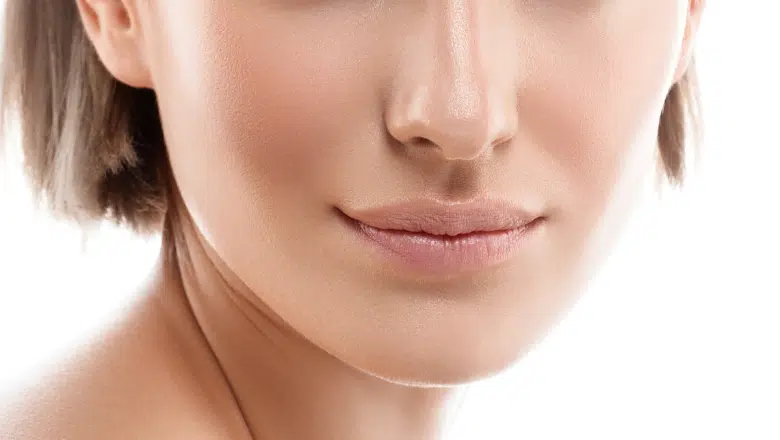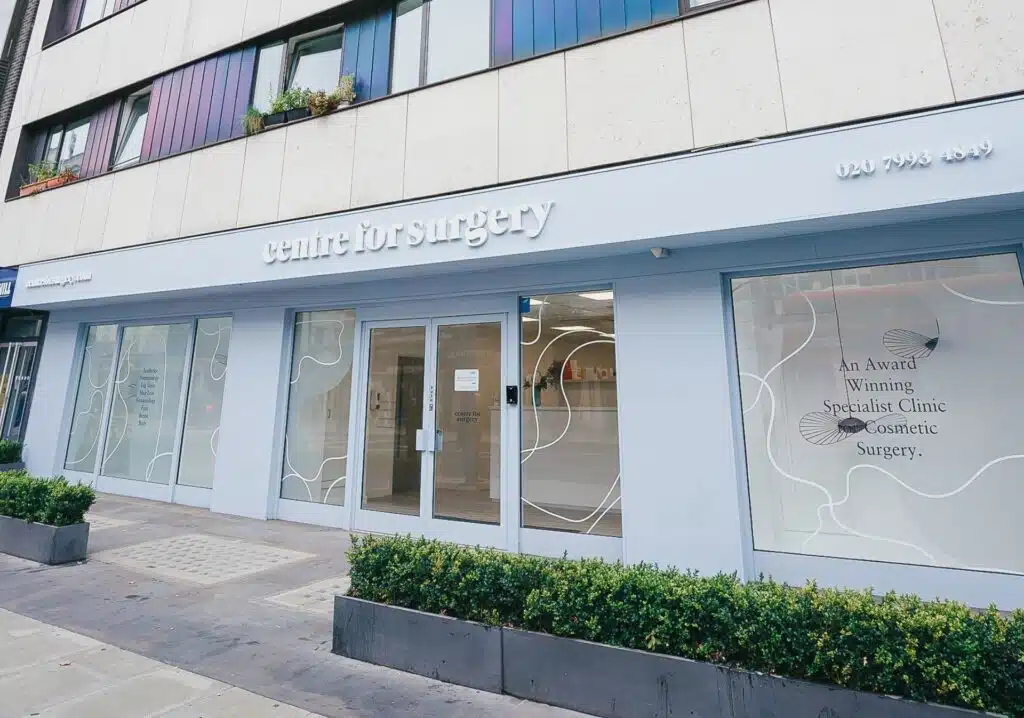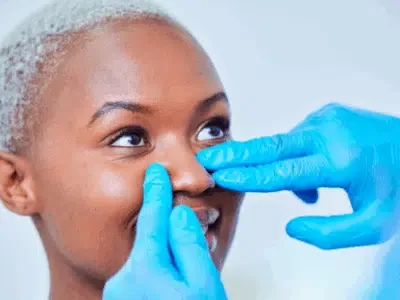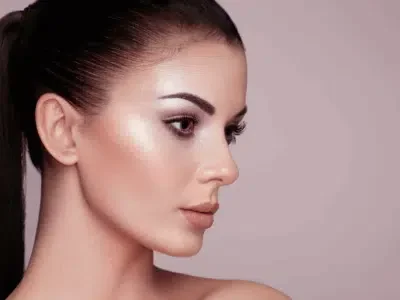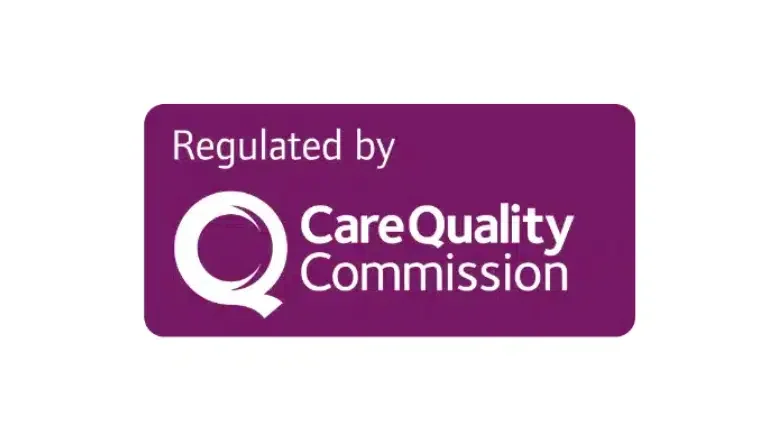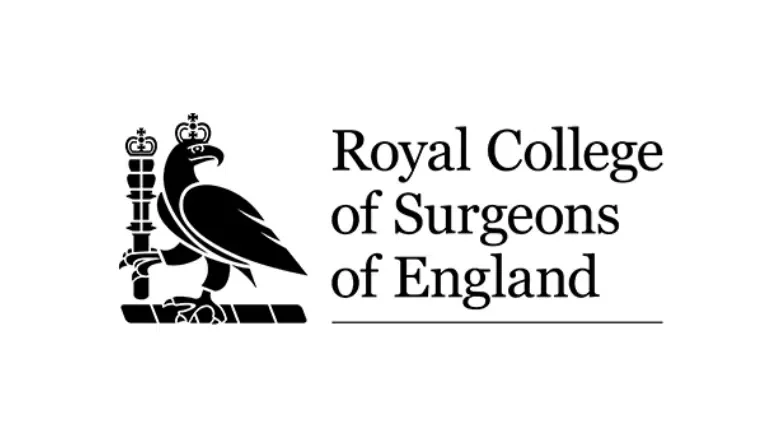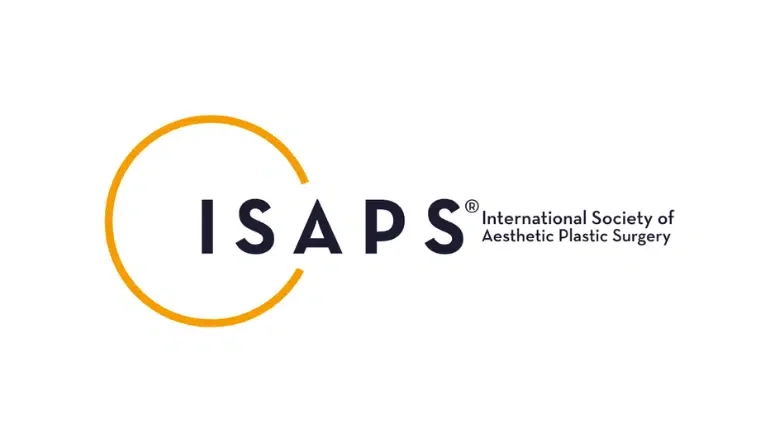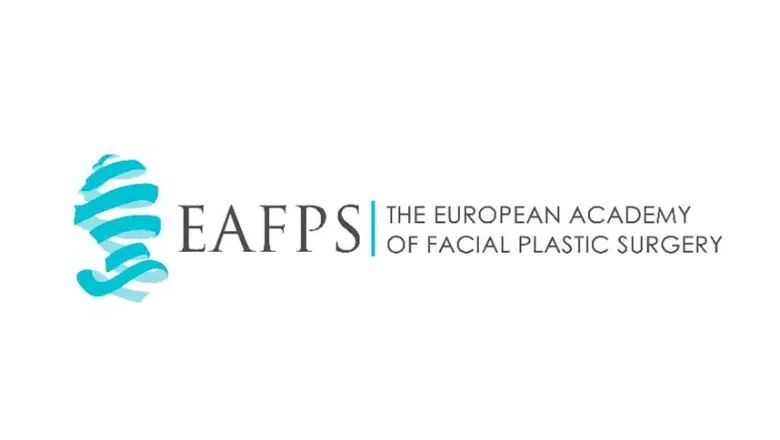Understanding How a Nose-Job Can Alter a Round-Tipped Nose
Your nose is arguably the most eye-catching feature of your face. It sits right in the middle and its shape can drastically affect how your face is perceived as a whole. A ‘bulbous’ nose, in particular, is marked by a tip that is round, wide, and generally lacking in definition. The distinct appearance of a bulbous nose may seem out of sync with the rest of your facial features, which might cause a person to feel self-conscious or unhappy with their appearance.
If you’re one of those people who isn’t fully satisfied with the shape of your nose and you’ve been thinking about making some changes. In that case, you might want to consider the possibility of a nose job – a surgical procedure known in medical terms as a ‘rhinoplasty‘. This operation specifically focuses on altering the shape of your nose to better fit your facial proportions.
Based in London, Centre for Surgery is a clinic that focuses specifically on plastic surgery procedures. Our clinic houses expert surgeons who regularly carry out rhinoplasty procedures, ensuring they are experienced and adept in what they do. If you’re thinking of a nose job to reduce the bulbous shape of your nose, you’ll be in capable hands at Centre for Surgery. We’re dedicated to providing quality service to those looking for a change in their appearance, starting with reshaping one of the most noticeable features – the nose.
RELATED: How To Make Your Nose Smaller
Understanding a Bulbous Nose – What Does It Mean and Why Does It Occur?
When we talk about a ‘bulbous nose’, we’re referring to a nose that is typically larger than the average, often round in shape, and stands out more compared to other features on the face. The reason behind a bulbous nose can be attributed to a variety of factors, ranging from genetic predisposition, lifestyle choices, to certain medical conditions.
RELATED: Different Types of Nose Shapes – What are the Surgical Options?
Let’s begin with genetics. Some people are naturally born with a predisposition towards a bulbous nose. What this means is that their genetic blueprint defines the unique shape of their nose. People with bulbous noses usually have thicker skin covering their nose which can give the illusion of the nose being larger than the rest of their facial features.
Next, we come to lifestyle factors that can play a significant role in influencing the shape of the nose. For instance, regular exposure to the sun over a long period can lead to a thicker, larger nose. Similarly, if someone is consistently exposed to an environment with a lot of dust, dirt, or pollution, they might notice their nose becoming larger and more bulbous over time.
Certain medical conditions can also result in a bulbous nose. Conditions like ‘rhinophyma’ (a subtype of a skin condition known as rosacea that specifically affects the nose), and nasal polyps (small, non-cancerous growths that can block the nasal passages) can cause the nose to appear bulbous.
Features of a Bulbous Nose
Below, we delve into the traits typically associated with a bulbous nose, offering insights into its appearance and the underlying causes.
The Rounded and Broad Tip
The most notable attribute of a bulbous nose is its rounded, wide tip. This lack of definition and sharpness in the nasal tip gives the nose a bulbous appearance, distinctively setting it apart from more tapered or defined nasal tips.
Pronounced Nostril Flare
Nostrils that appear larger and more flared contribute to the overall roundness of the tip. This flaring can accentuate the width of the nose, making the nasal tip appear even more prominent.
An Excess of Soft Tissue
A bulbous nose often has a “soft” appearance, attributed to an excess of soft tissue. This surplus tissue can make the nose seem larger and lacks the firmness associated with more defined nasal features.
A Lack of Defined Features
Without sharp contours and definition, a bulbous nose may seem out of place or in disharmony with the rest of the facial features. This lack of definition is a key characteristic that distinguishes it from other nasal shapes.
Disproportionate Size and Shape
The size and shape of a bulbous nose may not align well with other facial features, leading to a perceived disproportion. This imbalance can affect facial aesthetics, making the nose a focal point for those concerned about their appearance.
Potential Asymmetry
In some cases, a bulbous nose may also exhibit asymmetry, with one side appearing larger or more pronounced than the other. This unevenness can further accentuate the nose’s bulbous nature and contribute to facial imbalance.
What Causes a Bulbous Nose?
A bulbous nose generally results from a mix of genetic factors and the specific structure of your nose. Some common causes include:
- Thick Skin on the Nose: Individuals with thicker skin on their nose might be more susceptible to developing a bulbous nose. This is because the thicker skin can hide the natural shape of the nose’s underlying structure, making the nose seem larger than it actually is.
- Rounded Nasal Tip Cartilage: The cartilage at the nose’s tip can naturally be rounded or bulbous. This can result in a wide or ill-defined nasal tip that gives the nose its bulbous look.
- Large Nostrils: In some instances, the nostrils might be naturally larger. This can further exaggerate the bulbous look of the nose.
- Nasal Trauma: A bulbous nose can also result from an injury or trauma to the nose, such as a broken nose. Such an event can cause the nose’s structure or cartilage to shift, resulting in a more rounded appearance.
- Ageing: As we age, the skin and cartilage of the nose can undergo changes. This can gradually lead to the nose taking on a more bulbous appearance over time.
Reasons Behind People Considering a Nose Job to Address a Bulbous Nose
Numerous individuals might consider getting a nose job, also known as rhinoplasty, to modify the size and shape of their bulbous nose. They might want to do this to bring about a change in their appearance and to create a more harmonious balance amongst their facial features.
However, the motivation for getting a rhinoplasty isn’t purely cosmetic for everyone. A nose job can also serve a functional purpose in improving a person’s breathing. Having a large or bulbous nose can sometimes lead to difficulty in breathing through the nose. This can further result in issues such as snoring or disturbances in sleep, amongst other breathing problems. By altering the structure of the nose, a nose job can effectively mitigate these symptoms, resulting in better airflow and improved breathing.
So, whether it’s to enhance facial aesthetics or improve breathing, the reasons behind people opting for a nose job to rectify a bulbous nose are varied and can make a significant difference to their quality of life.
Choices to Diminish the Look of a Bulbous Nose
Your personal characteristics, goals, and preferences play a major role in deciding how to reduce the appearance of a bulbous nose. That being said, generally speaking, surgical interventions, such as rhinoplasty, tend to be the most effective routes to take.
Rhinoplasty for a Bulbous Nose
Rhinoplasty is a surgical procedure specifically designed to help reshape a bulbous nose. It achieves this by modifying the underlying structure of the nose. To carry out a rhinoplasty, your surgeon will create incisions either inside your nostrils or across the thin bit of skin that lies between your nostrils – this provides them with access to the structure of the nose.
RELATED: Nose Surgery FAQs – Q&A about Rhinoplasty
From here, what the surgeon does is contingent on the specific patient’s case. They may reshape the cartilage, bone, and tissue of the nose to create an appearance that is more defined and harmonious with the rest of the face. This process could involve reducing the size of the nostrils, refining the tip of the nose, and correcting any asymmetries present. This way, rhinoplasty can provide an effective solution for those looking to reduce the appearance of a bulbous nose.
Rhinoplasty to Correct a Bulbous Nose
Rhinoplasty can be carried out using two primary techniques – the ‘open’ or ‘closed’ technique. The choice between these two methods is determined by your surgeon’s preference and your individual needs as a patient.
RELATED: Open vs Closed Rhinoplasty – Which is Best?
In an open rhinoplasty, the surgeon creates an incision on the columella – the piece of tissue that separates your nostrils – along with additional incisions inside your nostrils. This strategy allows the surgeon to peel back the skin of the nose, providing them with better access to the structure of the nose. This enhanced visibility facilitates the making of more significant changes. On the other hand, a closed rhinoplasty involves the creation of all incisions inside the nostrils only, eliminating the need for an incision on the columella.
Once the incisions are in place, your surgeon can then get to work reshaping the cartilage, bone, and tissue of your nose. This can lead to a more refined and balanced look. The process may involve actions such as reducing the size of your nostrils, refining the nasal tip, or rectifying any asymmetry in your nose.
Once the desired alterations have been completed, the surgeon will carefully sew up the incisions using stitches. Usually, a splint and bandages are applied to the nose after the procedure to safeguard it during the healing phase.
The entire operation typically lasts anywhere from one to three hours, depending on the complexity of the changes being made. Post-surgery, patients should anticipate some swelling and bruising, although these effects generally subside within a few weeks. The full impact of the surgery can take several months, even up to a year, to become fully apparent. However, most patients report noticing a significant enhancement in the appearance of their nose in the period following the surgery.
Recovery Process for Bulbous Nose Surgery
The recovery time after bulbous nose surgery, typically involving a rhinoplasty procedure, can fluctuate based on how extensive the surgery was and how each individual patient’s body heals. In general, though, patients should be prepared for some swelling, bruising, and discomfort in the days and weeks following the procedure. Here are some general expectations during the recovery period:
In the initial few days post-surgery, patients may encounter some pain, swelling, and bruising around their nose and eyes. To help manage any discomfort, the surgeon will prescribe pain medication.
Normally, the surgeon will place a splint on your nose to provide support and protection as it heals. This splint is typically taken off after about a week.
For several weeks following the surgery, it is recommended to avoid intense physical activities or exercise. This is to prevent any unnecessary strain on the healing tissues of the nose.
To help decrease swelling, it’s important to keep your nose elevated and refrain from lying on your side or stomach for several weeks after the procedure.
Blowing your nose should be avoided for at least a week after the procedure. This is because doing so could potentially disrupt the healing process and raise the risk of bleeding.
It’s worth noting that the full results of the surgery might take several months to become completely noticeable. This is because the swelling and bruising need to subside, and the nasal tissues need to continue healing. This means that patience is key in the post-operative period, but the long-term results are generally considered to be worth the wait.
Things to Avoid After Rhinoplasty
Following a rhinoplasty, there are certain activities and behaviours that you should avoid to ensure the best possible healing and results:
- Refrain from blowing your nose for at least one week after the operation. Doing so can risk causing bleeding and interfere with the healing process.
- Steer clear of any activities that could put undue stress or pressure on your nose. This includes contact sports or heavy lifting, which should be avoided for several weeks post-surgery.
- For at least six weeks following the surgery, don’t wear glasses that rest on the bridge of your nose. This could exert pressure on the healing tissues.
- Keep your nose away from extreme hot or cold temperatures, as these can influence the healing process negatively.
- For several weeks post-surgery, don’t consume alcohol or smoke. These can enhance the risk of complications and delay the healing process.
- Avoid touching, picking at, or otherwise disturbing your nose. This can interfere with healing and increase the risk of infection.
- Minimise sun exposure or tanning, as these can lead to scarring and discolouration.
By observing these precautions, you’re more likely to have a smooth recovery and achieve the best possible results from your rhinoplasty.
Duration of Rhinoplasty Results for a Bulbous Nose
The outcomes of a rhinoplasty procedure for a bulbous nose are generally long-lasting. Nevertheless, minor changes may still occur as your nose naturally ages over time. The specific duration of the results can depend on various factors. These factors include the extent of the surgery, your age and overall health condition, as well as how well you follow the aftercare instructions provided by your surgeon.
Can Rhinoplasty Enhance Breathing?
Absolutely, rhinoplasty can help improve breathing problems. The procedure can correct structural issues in the nose that may be leading to breathing difficulties. For instance, it can fix a deviated septum, alleviate nasal congestion, or rectify other problems that might be impacting the nasal airways. So, along with enhancing the appearance of your nose, rhinoplasty can also provide functional benefits.
Alternative Non-Surgical Methods to Address a Bulbous Nose
If surgery isn’t an option you want to explore, there are several non-surgical alternatives available that can help improve the appearance of a bulbous nose:
Makeup Contouring: By using makeup contouring techniques, you can create an illusion of a more refined and sculpted nose. This method involves the strategic use of darker shades to form shadows and lighter shades to highlight certain areas of the nose, providing a perception of a better defined and contoured nose.
Dermal Fillers: Another non-surgical option involves the use of injectable dermal fillers. These are used to add volume and definition to specific areas of the nose, such as the bridge or the tip, enhancing the overall appearance of the nose.
However, it’s important to be aware that these non-surgical alternatives can only temporarily alter the appearance of a bulbous nose. They aren’t permanent solutions and will require ongoing maintenance. If you’re seeking a more lasting solution, then a rhinoplasty surgery might be a more suitable option to consider.
Centre for Surgery: Why Choose Us?
Choosing the right clinic for any surgical procedure is vital, and at the Centre for Surgery, we pride ourselves on offering an exceptional level of care, expertise, and commitment to patient satisfaction. Here are some reasons why you might want to choose us:
Expert Team: Our clinic is home to a team of highly trained and experienced surgeons, who specialise in a variety of fields, including rhinoplasty. Our surgeons regularly perform procedures to address a wide range of aesthetic and functional concerns, including reshaping a bulbous nose.
State-of-the-art Facilities: Located in the heart of London, our clinic is equipped with state-of-the-art facilities. This ensures that all our procedures are carried out in a safe, comfortable, and technologically advanced environment.
Patient-focused Approach: At the Centre for Surgery, we believe in a patient-focused approach. This means we listen carefully to your goals and concerns, provide thorough consultations to discuss your treatment options, and develop a personalised treatment plan that best meets your needs.
Emphasis on Education: We believe in educating our patients about their procedure, so they feel confident and well-informed. Our team will guide you through each step of the process, from the initial consultation to recovery and aftercare.
Comprehensive Aftercare: We offer a comprehensive aftercare programme to ensure your recovery is smooth and comfortable. Our team is always on hand to answer any queries or address any concerns you might have during your recovery.
With a strong commitment to providing excellent patient care and achieving outstanding results, the Centre for Surgery is a trusted choice for anyone considering rhinoplasty.
